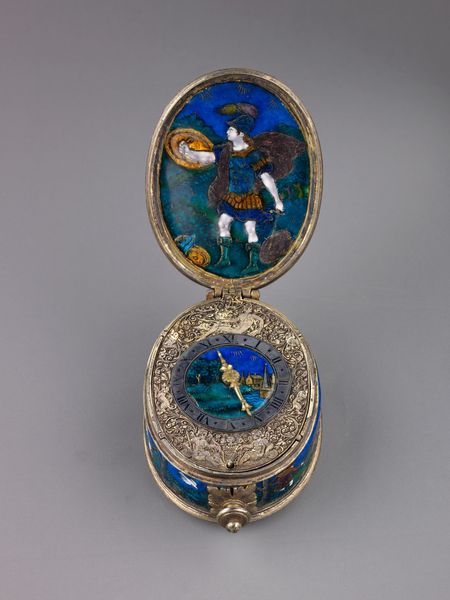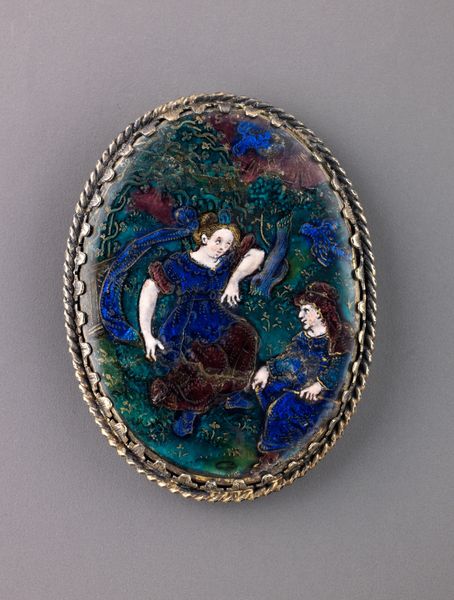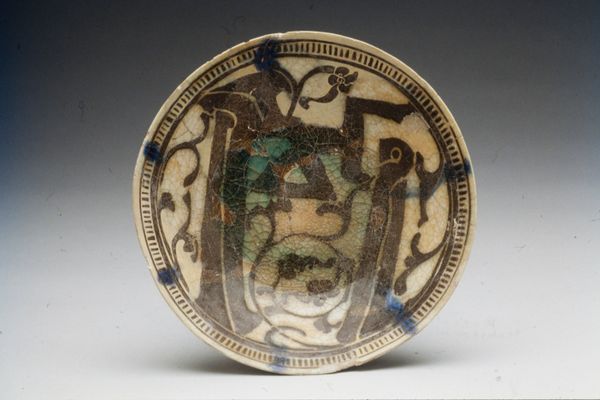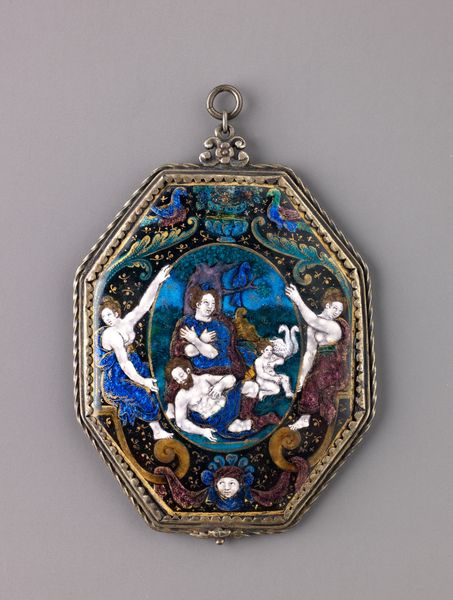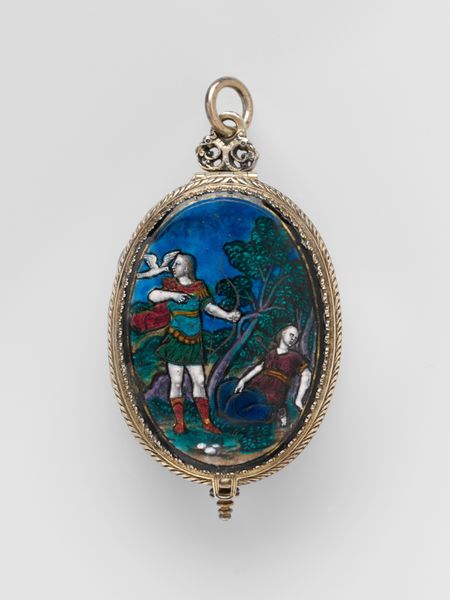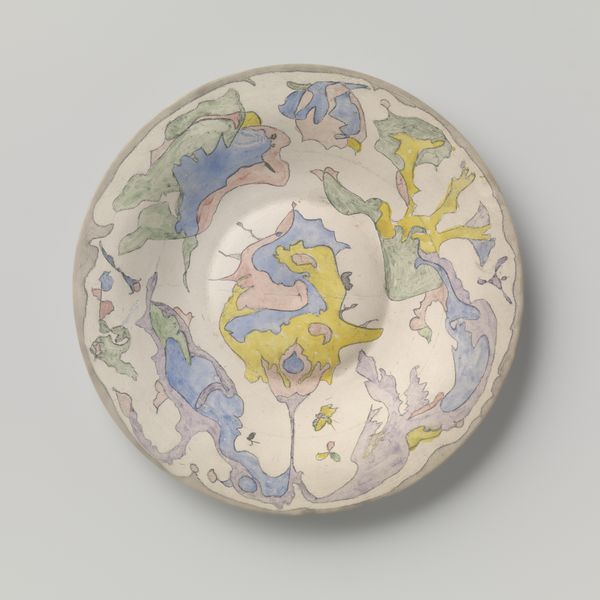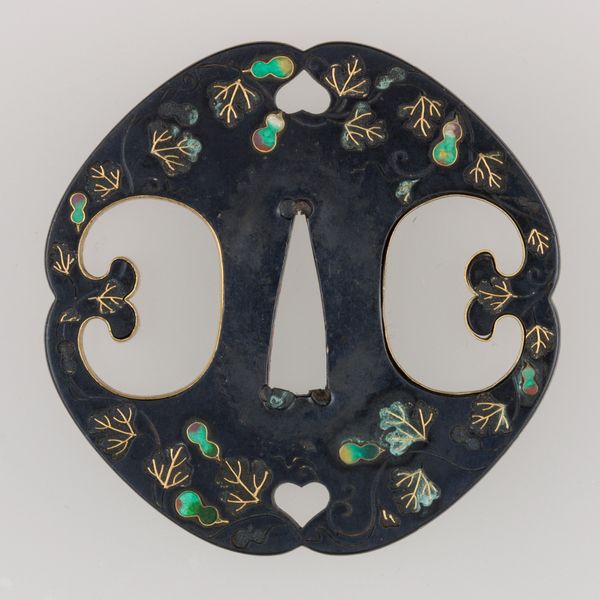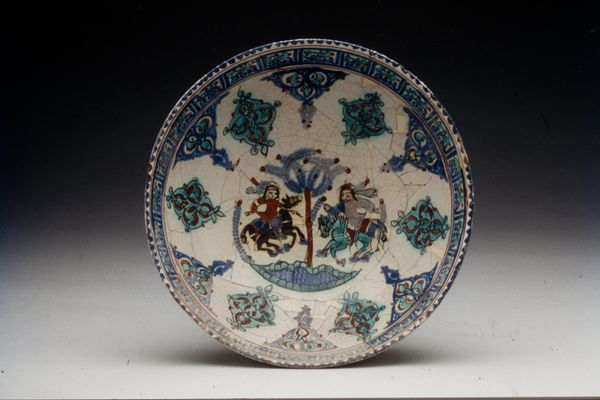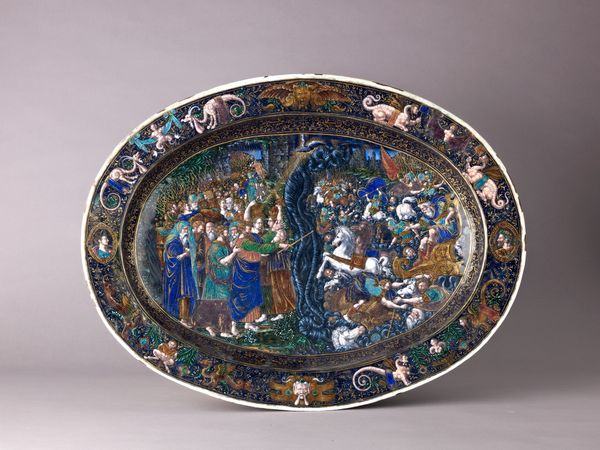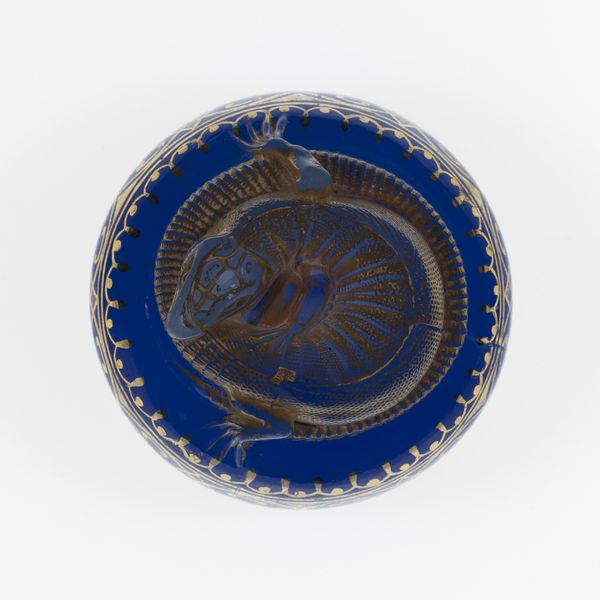
painting, sculpture, enamel
#
allegory
#
painting
#
mannerism
#
figuration
#
sculpture
#
enamel
#
history-painting
#
decorative-art
#
miniature
Dimensions: 1 5/8 x 1 1/2 in. (4.1 x 3.8 cm)
Copyright: Public Domain
Curator: Oh, this piece has a chilling, jewel-like quality, doesn't it? It’s deceptively pretty. There’s something nightmarish lurking beneath the shimmer. Editor: This is indeed a compelling piece titled “Orpheus Attacked by the Maenads,” dating back to sometime between 1600 and 1625. The artist is Suzanne de Court. What we are looking at is an enamel miniature. You can see it in the collection of the Metropolitan Museum of Art in New York. Curator: Enamel… It’s perfect! That slightly brittle surface echoes the shattering violence of the scene. I can almost hear the high-pitched ringing. And the color choices! The blues… they almost pulse. Tell me more about the subject? Editor: The piece depicts the myth of Orpheus, the legendary musician, being torn apart by the Maenads, who are the female followers of Dionysus. The myth is all about the consequence of neglecting social and religious obligation. Orpheus grieves so profoundly at the death of Eurydice that he withdraws, offending Dionysus and sealing his violent doom. De Court has captured this moment. Curator: Poor Orpheus. The intensity in this piece really underscores how art both captures and, daresay, almost replays traumas across time. It’s not just telling the story, it’s…embodying it. Does the mannerist style heighten that tension somehow, do you think? Editor: Absolutely. Mannerism, with its exaggerated forms and emotional intensity, perfectly suits this dramatic subject. De Court's training as a decorative artist comes through. Note that the figures seem almost arranged like pieces in a larger tableau, and you'll also spot how it fits in as a product of its period when enamel miniature where all the rage. This would've been owned by wealthy Europeans Curator: A conversation piece, or perhaps something a little darker? Like a jewel, but sharp enough to draw blood if you aren’t careful. Knowing the scene and what it may evoke allows one to view art more responsibly than through unguided eyes. Editor: A good way to summarize its impact, I feel. Its preciousness is deceptive but, by now, we know the story! The historical circumstances that motivated Suzanne de Court provide another important angle for us. Curator: Well said. I’ll carry this visual and historic record of pain with me. I feel challenged by De Court to bring myself to the emotional work. Editor: Yes, me too. Here we've had the benefit of experiencing De Court's piece through both history and personal emotional expression. Both enrich the encounter.
Comments
No comments
Be the first to comment and join the conversation on the ultimate creative platform.
